The World Changes

Brief Synopsis
Cast & Crew
Mervyn Le Roy
Paul Muni
Aline Macmahon
Mary Astor
Donald Cook
Jean Muir
Film Details
Technical Specs

Synopsis
The Nordholm family settles in the Dakota territory and founds a successful community, but young Orin Nordholm, Jr. has greater ambition. He is one of the first to drive cattle directly from Texas to Omaha, which leads to a partnership with butcher James Clafin in Chicago. Although Anna Nordholm, his mother, disapproves and his girlfriend, Selma Peterson, will not accompany him, Orin moves to Chicago, invents the refrigerated railroad car and starts a profitable meatpacking business. He marries Clafin's daughter Virginia, whose hatred of his business is a source of conflict between them. Virginia insists that their sons move in the best society, so she sends Paul to Oxford and urges Richard to marry Jennifer Clinton, a member of New York society. At a party in the Clinton's honor, Virginia announces that Orin will retire from the meat packing business to organize an art museum. She adds that Richard and Jennifer will marry and live in New York. This so angers Orin that he threatens to place Virginia in an insane asylum if she thwarts his plans. Eventually, his anger drives Virginia insane and she dies from a stroke. Years later, Richard and Jennifer's daughter Natalie is engaged to an impoverished English nobleman, Sir Phillip Ivor. Anna agrees to attend the wedding and meet her grandchildren for the first time, accompanied by Selma, the granddaughter of Orin's first love. Anna's prairie wit sees through her superficial family. Only Natalie's brother, Orin III, is genuinely interested in the old values and he and Selma become close friends. When scandal hits, Richard commits suicide and Phillip leaves Natalie at the altar. Before Orin dies, he asks Orin III to return to Dakota with Selma and Anna. He does this, taking Orin's body to be buried out west.

Director

Mervyn Le Roy
Cast
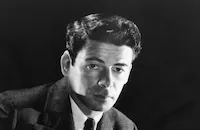
Paul Muni

Aline Macmahon

Mary Astor

Donald Cook

Jean Muir

Guy Kibbee
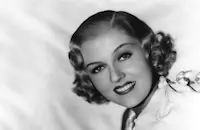
Patricia Ellis
Theodore Newton

Margaret Lindsay
Gordon Westcott

Alan Dinehart
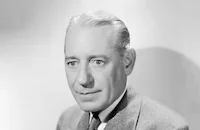
Henry O'neill
Anna Q. Nilsson
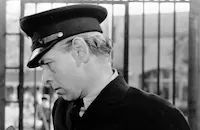
Arthur Hohl
William Janney

Mickey Rooney

Douglas Dumbrille

Marjorie Gateson
Oscar Apfel
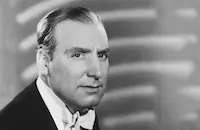
Alan Mowbray
William Burress
Wallis Clark

Clay Clement
Willard Robertson

Sidney Toler
Philip Faversham
Jackie Searle
Crew
Edward Chodorov
Louis De Angelis
Leo F. Forbstein
Tony Gaudio
Sheridan Gibney
Robert M. Haas
Martin Hershey
William Holmes
Michael Joyce
Earl Luick
Harold Noyes
Al Riggs
Homer Van Pelt
George Whittemore

Photo Collections
Videos
Movie Clip



Trailer
Hosted Intro
Film Details
Technical Specs

Articles
The World Changes
Off-camera, she was no stranger to turmoil. Her affairs with actors and her string of failed marriages hardly were unique in Hollywood. Rarer was her strife and struggles with her parents. They saw her as their meal ticket, moving from Illinois, where she was born, pushing her toward film in Los Angeles as soon as she won a few beauty contests. Her first film was a short, The Scarecrow, in 1920. Her breakthrough role came opposite John Barrymore in Beau Brummel (1924). But she lived under their thumb until, she wrote in her memoir, she ran away at the age of 19 from the mansion her earnings bought them. She did not control her salary until she was 26, whereupon her parents sued her for financial support, getting $100 a week, but being forced to scale back their lavish lifestyle.
Having survived the transition to talkies, her star rose during the '30s. In 1943 she signed a seven-year contract with MGM. It seemed a coup. But Astor found the string of roles she referred to dismissively as "moms for Metro" unchallenging, even when her screen daughters were Judy Garland, Esther Williams and Elizabeth Taylor, and was not sorry to see the string end with Little Women (1949). Which brings us to Astor's mother role in The World Changes (1933). It's anything but humdrum, as she felt her MGM mom roles were. It's unabashedly over the top in an ambitious film of epic sweep that crams a lot into its 91 minutes. Obviously influenced by the Oscar®-winning Cimarron (1931) in its tale of American expansion, it begins in 1856 in the Dakota Territory with a childbirth and ends in 1929 with a bang - well, a crash, as in Wall Street - before returning full circle to the Dakota soil on a note of hope.
Paul Muni has top billing in this heavily-populated film and it's his all the way. He was 38 when he filmed it, but convincingly plays a young cowboy in his 20s who ages into a patriarch trying to salvage his family in his 70s. It's more than a stunty movie relying on makeup. Muni is thoroughly immersed in the character of Orin Nordholm, Jr. whatever age he's playing. By the end, he's disappeared into the character. Essentially, it's a cautionary film about the worship of false gods. Orin's older pioneer mother (Aline MacMahon) stays home on the farm, working it, living in the house she helped build. Orin Jr. is not one to stay home on the farm. Ambitious and driven, he sees there's money to be made driving cattle from Texas to the stockyards of Omaha and Chicago. Twenty-two minutes in, and he's met Lt. Colonel George A. Custer (Clay Clement), Buffalo Bill Cody (Douglas Dumbrille) and Wild Bill Hickock (Charles Middleton). When Custer and his troops stop at the farm and tell the Nordholm family that the war is over, they are greeted with blank stares. What war? That's how isolated they are. Buffalo Bill, a friendly guy, gives Orin Jr. some tips on managing a cattle drive. When Orin brings it off, the cattle buyer (Guy Kibbee) offers Orin a partnership in his Chicago slaughterhouse and Orin never looks back. The coming of the railroad means more cattle. And when Orin's assistant - transforming an incident from the real-life story of Gustavus Swift - nudges him into solving meat spoilage problems by using refrigerated boxcars, Orin cries, "Iceboxes on wheels!" It's his - and meat's - eureka moment. Orin runs into some snags and rivals, but he knows how to play hardball in banks and boardrooms, and triumphs when his workers kick in their pensions to finance his scheme.
He's a figure not often seen today - a square shooter, energetic, visionary, honest, hard-working, a good-guy capitalist. If only things at home went as well as they did in the slaughterhouse. Soon after he marries Kibbee's pretty daughter (Astor), he realizes she's ashamed of the origins that paid for her Eastern finishing school snobberies, which include leaving Chicago as soon as possible, marrying into a pedigreed Old Money family from New York, and refusing to serve meat in her home. At the engagement party for her older son, she announces, without having consulted him, that Orin is selling the business and leaving Chicago. He reacts predictably, saying they're moving nowhere. She reacts predictably, experiencing a nervous collapse.
They then live miserably ever after, or at least until Astor gets a spectacular exit. One night the closed door separating their bedrooms opens, and in she glides, looking like a Kabuki Lady Macbeth, deranged, wild-eyed, unkempt hair framing a contorted face as she screams, "Butcher! I smell blood!" She then falls over, dead. Orin manages to hold on to most of his money despite the best efforts of their children and close friends to squander it. When the matriarch, MacMahon's Nordholm, comes to New York for the first time to attend a granddaughter's ill-advised wedding to a titled ne'er-do-well, she asks her grandsons what they do. When the answer in effect is nothing, there's an observation about people who make money from honest toil while others, crazed with greed, gamble with other people's money, to widespread ruin. Muni, whose patriarch ends by reaching out to the new generation, had just come from Scarface (1932) and I Am a Fugitive from a Chain Gang (1932), was at the peak of his career, and was directed by his Fugitive director, Mervyn LeRoy. The World Changes deserves more than the obscurity that has befallen it, reminding us, as it does, that the wolves started howling on Wall Street moments after the Dutch hammered its last nail into place.
Jay Carr

The World Changes
Quotes
Trivia
Notes
Sheridan Gibney's story was entitled "America Kneels." This was Jean Muir's first film. Modern sources credit Robert Lord as supervisor.
















